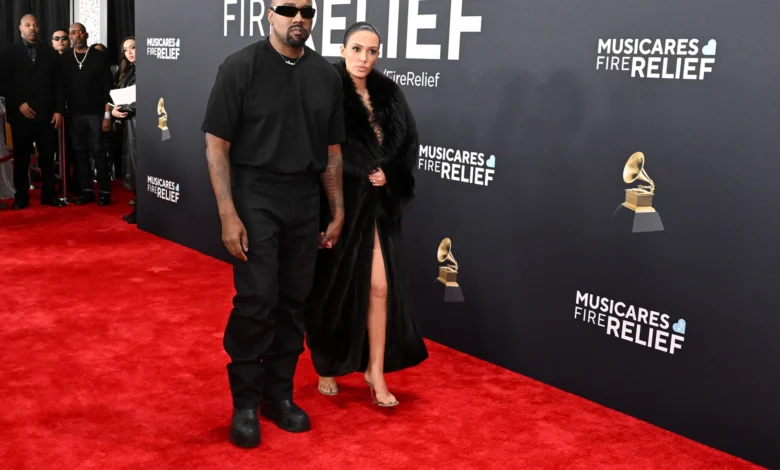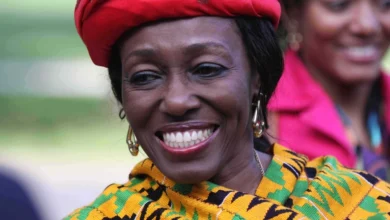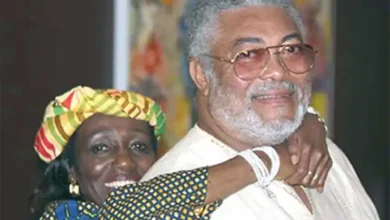
Why Bianca Censori’s Naked Look Sparked a Global Fashion Debate
Celebrities like Elle Fanning, Kim Kardashian, and Doja Cat have made the naked dress trend a red-carpet staple in 2024. These stars expanded fashion limits at prestigious events like the Academy Awards and Met Gala. Bianca Censori’s appearance at the 2025 Grammys took this revealing concept to new heights.
Censori wore a transparent mesh mini dress that created an immediate stir and went viral on social media platforms. This controversial moment raised deeper questions about consent and agency. Reports later surfaced that her husband, Kanye West, had urged her to “make a scene” at the event.
Censori’s Grammy outfit represents a fundamental change in red carpet fashion that affects industry standards and public conversation. The rise of naked dresses and their broader implications for celebrity fashion might signal a new era in how we view red carpet boundaries.
The Evolution of Red-Carpet Fashion
Red carpet fashion has come a long way since its beginnings in the entertainment industry. It all started at the Egyptian Theater in Los Angeles during the 1922 premiere of Robin Hood.
From modest to daring: A brief timeline
The late 1990s and early 2000s brought major changes to red carpet fashion. Nicole Kidman revolutionized the scene with her chartreuse John Galliano gown at the 1997 Oscars. Her choice brought true couture to red carpet events. Years earlier, Barbara Streisand made headlines with her see-through pantsuit at the 1969 Oscars. She became one of the first stars to challenge awards show fashion norms.
Rise of the naked dress trend
Several iconic moments helped establish the “naked dressing” trend. Cher led the way with two groundbreaking Bob Mackie dresses – one at the 1974 Met Gala and another at the 1988 Oscars. Elizabeth Hurley’s safety-pin Versace dress turned heads at the 1994 premiere of Four Weddings and a Funeral. Her bold choice became a defining moment in red carpet history.
Celebrity influence on fashion boundaries
Stars continue to shape red carpet fashion with their bold choices. Recent data shows Beyoncé’s mention of “denim on denim” in her new album sparked a 14% rise in online interest for double denim. Taylor Swift’s choice of a Stella McCartney bag at Coachella led to a 75% jump in brand interest. These fashion statements create lasting effects – red carpet appearances at the 2019 Cannes Film Festival generated USD 101.00 million in media value for brands.
Today’s red-carpet fashion celebrates diversity and bold expression. Stars like Billy Porter and Lady Gaga have redefined traditional norms. Porter’s tuxedo gown at the 2019 Oscars and Gaga’s dramatic entrance at the 2019 Met Gala show how the red carpet has become a platform for self-expression and social commentary.
Bianca Censori’s Grammy Appearance
Bianca Censori created a defining moment that challenged fashion norms at the 2025 Grammy Awards. The 29-year-old architect made her entrance in a black fur coat with Kanye West. This appearance would soon become the talk of headlines.
The controversial outfit reveal
The scene played out like a calculated performance. Censori responded to West’s whispered instruction to “make a scene” and let her fur coat drop slowly. Her outfit choice – a completely sheer mini dress with clear heels – left almost nothing to imagination. Both seemed intent on recreating West’s VULTURES 1 album cover, which shows a masked figure next to a nude silhouette.
Original public reaction
Public response came quick and divided. Megyn Kelly, the media personality, called the appearance “crass, classless & desperate”. Feminist activist Jean Hatchet saw it as “controlling behavior” from West. Notwithstanding that, some defended it as a statement about equality in entertainment.
Media coverage effect
This spectacle reached beyond fashion criticism. Neama Rahmani, a former federal prosecutor, raised questions about California’s indecent exposure laws. Japanese investors backing West’s $20 million international concert deal expressed their serious concerns. They described the whole ordeal as “creepy beyond belief”.
The pair left shortly after their red-carpet moment. Reports disagreed on whether they chose to leave, or security escorted them out. West’s first Grammy appearance in ten years sparked discussions about power dynamics and artistic expression in celebrity culture.
Fashion Statement or Publicity
Sources reveal that the Grammy appearance was a publicity stunt to copy West’s “Vultures” album cover. The moment wasn’t a random fashion choice but followed West’s pattern of creating media buzz through controversial public appearances.
Analyzing the intention
Celebrity publicity tactics show this pattern repeatedly. Public relations in fashion and retail now depends on manufactured stunts to grab media attention. These publicity moves don’t work as well when overused, but they still catch people’s attention.
Kanye West’s influence
West has a history of changing his partners’ fashion choices. His ex-wife Kim Kardashian admitted, “I always thought I had really good style until I met my husband, and he told me I had the worst style”. Julia Fox shared a similar experience and talked about her “pre-approved outfits and transformations” during their relationship.
Social media response
The public’s reaction sparked heated debates about agency and control. People across social media platforms voiced their concerns about Censori:
- Calls for intervention, stating “Someone needs to save Bianca from Kanye’s chaos”
- Questions about relationship dynamics and control
- Debates over fashion boundaries versus exploitation
Censori’s friends are very worried about her well-being. They believe West has isolated her from others. The controversy has started new discussions about power dynamics in celebrity relationships. Some sources suggest West is shaping Censori into a “radicalized version” of his ex-wife.
Page Six reports the stunt was meant as an artistic statement. This whole ordeal has sparked wider conversations about consent, control, and the cost of publicity in today’s celebrity culture.
Impact on Fashion Industry
Red carpet fashion draws mixed reactions from professional stylists and designers. The sheer dress trend we saw at the 2025 Grammys started intense industry talks about fashion’s next big move.
Designer perspectives
Chinese American designer Kim Shui believes creative expression must “come from a genuine place”. Other designers point to social media’s growing power over red carpet choices. Celebrities now switch multiple outfits during award shows to boost their online presence.
Future of red-carpet fashion
Red carpet fashion’s new direction mirrors bigger changes in the industry. Celebrity stylists now hold unprecedented influence, and their work brings millions in advertising value. Strategic collaborations with brands have altered the scene. Some red-carpet appearances now match the pay of major film roles.
Celebrity stylist reactions
The core team of professionals raise several concerns about current trends:
- A single red-carpet look earns stylists just $700-750
- They put in hours of prep work, multiple fittings, and complex logistics
- Few stylists with multiple clients earn substantial income
Veteran stylists question if current green practices can last. The need to create viral content has changed how brands and celebrities work together. Stylists ask for better pay since they help generate “millions and millions in advertising” value. This move shows how social media’s power often matters more than traditional fashion choices.
Bianca Censori’s Grammy appearance challenged fashion norms in unprecedented ways. Naked dresses have always made headlines on red carpets, but this whole ordeal started significant conversations about consent, control, and what viral fashion moments really cost.
Social media now affects the fashion world more than artistic expression. Celebrity stylists must create headline-worthy looks while designers struggle to stay true to their art amid the chase for viral moments. Fashion has changed from an art form into a publicity tool.
Censori’s appearance revealed deeper problems in celebrity culture. People started asking about power dynamics, especially when you have influential figures like Kanye West shaping their partners’ public image. This reminds us that boundary-pushing fashion, though sometimes revolutionary, might hide troubling relationship patterns.
Red carpet fashion keeps changing, and the Censori moment could be where the industry needs to rethink its path. Designers and stylists must balance creative expression with responsible representation. They need to ensure that challenging fashion norms serves art rather than just shock value.





